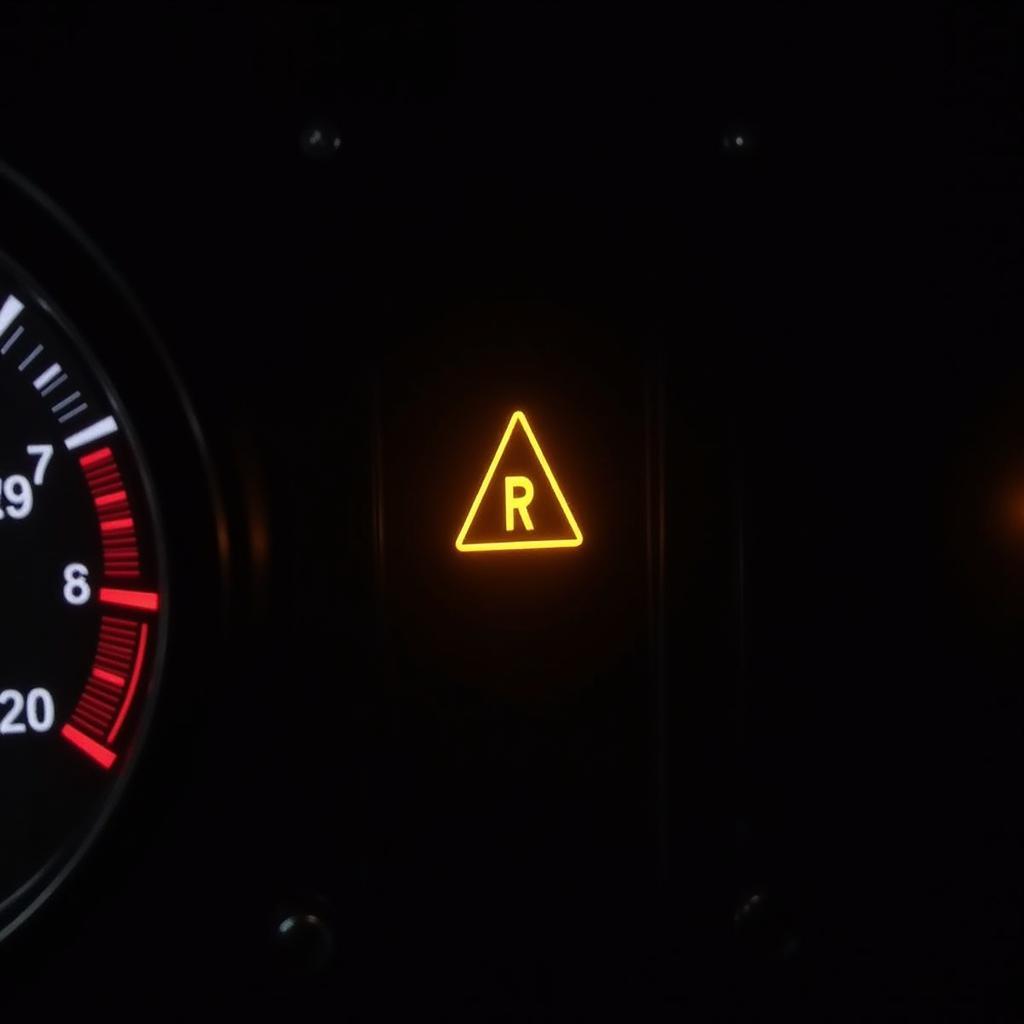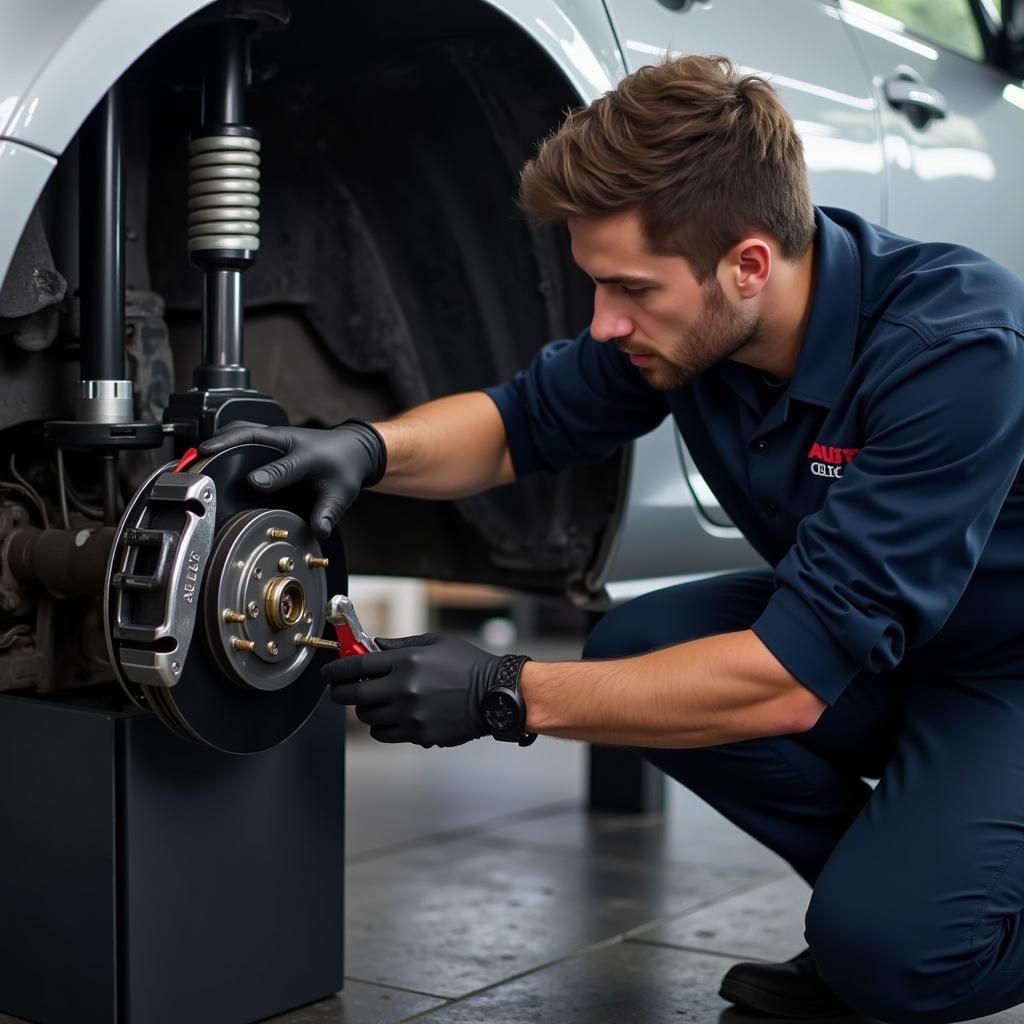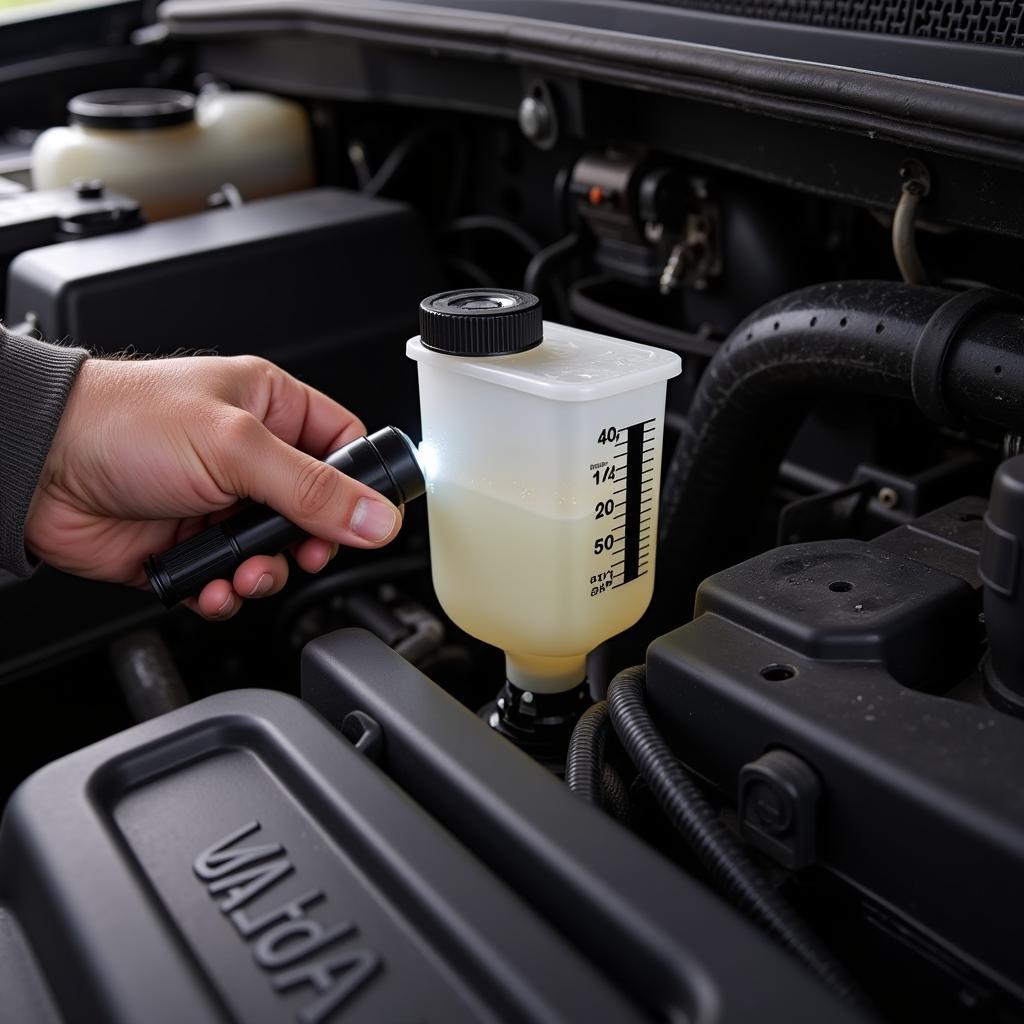The dreaded brake pads warning light is up on your Audi dashboard, and you’re wondering what it means and, more importantly, what to do next. This article provides a comprehensive guide on understanding, diagnosing, and addressing the brake pad warning light in your Audi. We’ll cover everything from the basics to more advanced diagnostics and solutions, empowering you to make informed decisions about your car’s maintenance.
Understanding Your Audi’s Brake Pad Warning System
Audi vehicles are equipped with a sophisticated electronic brake pad wear sensor system designed to alert you when your brake pads reach a critical wear level. This system uses sensors to monitor the thickness of the brake pads and trigger a warning light on your dashboard when it’s time for a replacement.
 Audi Dashboard with Brake Pad Warning Light
Audi Dashboard with Brake Pad Warning Light
What Does the Brake Pad Warning Light Mean?
When the brake pad warning light illuminates, it typically indicates one or more of the following:
- Worn Brake Pads: This is the most common reason for the warning light. Over time, brake pads naturally wear down due to friction.
- Faulty Brake Pad Sensor: In some cases, a malfunctioning sensor might trigger the warning light even if your brake pads are in good condition.
- Wiring Issues: Damaged or corroded wiring connecting the sensors to the vehicle’s electrical system can also cause the warning light to come on.
How to Diagnose the Problem
While a illuminated brake pad warning light most likely points to worn brake pads, it’s essential to diagnose the issue properly:
- Check Your Owner’s Manual: Your Audi’s owner’s manual will provide specific information about the brake pad warning system and recommended maintenance schedules for your model.
- Visual Inspection: If you’re comfortable doing so, you can visually inspect your brake pads. Look through the spaces between the wheel spokes to see the brake pad’s outer edge. A thin lining indicates worn pads.
- Professional Inspection: For a thorough diagnosis, consider visiting a qualified mechanic specializing in Audi vehicles. They can accurately assess your brake system’s condition, including pad thickness, sensor functionality, and overall brake system health.
 Mechanic Inspecting Audi Brakes in a Garage
Mechanic Inspecting Audi Brakes in a Garage
Options for Addressing the Brake Pad Warning
Once you’ve diagnosed the cause of the brake pad warning light, you can explore solutions:
- Brake Pad Replacement: If your brake pads are worn down, replacing them is crucial for maintaining optimal braking performance and safety. Always use high-quality brake pads designed for your specific Audi model.
- Brake Pad Sensor Replacement: If the diagnosis reveals a faulty sensor, it will need to be replaced.
- Addressing Wiring Issues: Any damaged or corroded wiring related to the brake pad warning system should be repaired or replaced by a qualified mechanic.
Importance of Timely Action
Ignoring a brake pad warning light can lead to serious safety hazards and more costly repairs down the line. Driving with worn brake pads can:
- Reduce Braking Efficiency: Worn brake pads compromise your vehicle’s ability to stop quickly and safely.
- Damage Rotors: Driving with worn pads can damage your brake rotors, leading to costly repairs or replacements.
- Increase Risk of Accidents: Ignoring the warning light significantly increases the risk of brake failure and accidents.
Preventing Future Brake Pad Issues
Proactive maintenance is key to preventing premature brake pad wear and potential issues:
- Adhere to Scheduled Maintenance: Follow your Audi’s recommended maintenance schedule for brake inspections and service.
- Avoid Aggressive Driving: Hard braking and rapid acceleration contribute to faster brake pad wear.
- Choose Quality Parts: Always use high-quality brake pads and components from reputable manufacturers.
2016 audi a6 brake pads warning light
Conclusion
Addressing a brake pad warning light promptly is crucial for your safety and the longevity of your Audi. By understanding the warning system, conducting proper diagnosis, and taking timely action, you can ensure optimal braking performance and enjoy peace of mind on the road. Remember, regular maintenance and expert care are essential investments in your safety and your Audi’s overall health.
FAQs
Q: How long can I drive with the brake pad warning light on?
A: It’s not recommended to drive with the brake pad warning light on. Have your brake system inspected and addressed as soon as possible.
Q: Can I replace my Audi’s brake pads myself?
A: While possible, brake pad replacement requires mechanical expertise. It’s generally advised to have it done by a qualified mechanic.
Q: How often should I replace my Audi’s brake pads?
A: Brake pad lifespan varies depending on driving habits and conditions. As a general rule, it’s a good idea to have them inspected every 10,000-12,000 miles.
Q: What’s the difference between the brake pad warning light and the parking brake light?
A: The brake pad warning light indicates worn pads, while the parking brake light signals that the parking brake is engaged.
Q: Does my Audi have a brake fluid sensor?
A: Yes, most Audi models have a brake fluid level sensor that will trigger a warning light if the fluid level is low.

